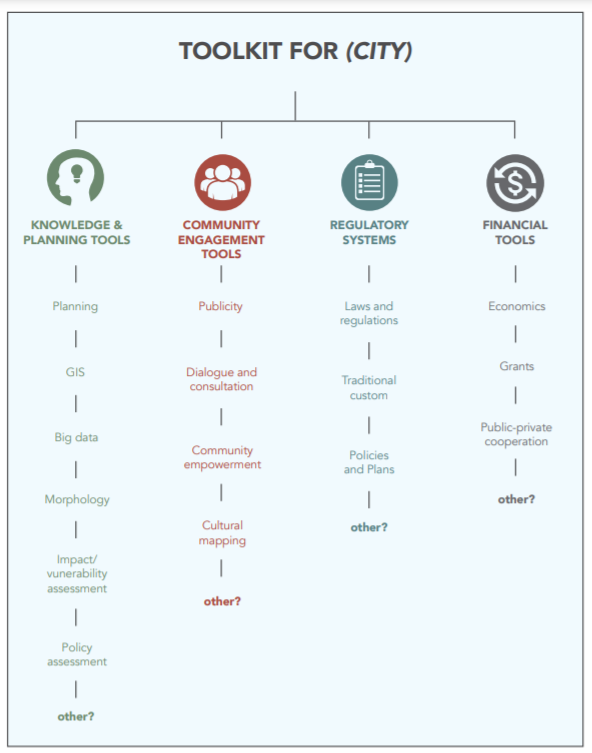5.3.2. Components of the HUL approach
Course subject(s)
5. Unchartered waters: How to address these challenges?
The UNESCO Recommendation on the Historic Urban Landscape (HUL) proposes a six-step action plan which includes 1) mapping cultural and natural resources, 2) consulting stakeholders including communities on which values and attributes to protect, 3) assessing vulnerability, 4) integrating heritage elements into spatial planning, 5) prioritizing policies and actions for preservation, and 6) developing partnerships to implement the projects.
This approach focuses on the preservation of urban heritage by integrating the developments, environmental and socio-economic changes in the environment. It aims to provide sustainable planning and design interventions within historical environments. In this way, the HUL approach is an integral part of the SDG framework.
The HUL Toolkit
The HUL toolkit integrates policies and practices of conservation of the built environment into the wider international goals of urban development, whilst respecting the values of different cultural contexts.
The HUL toolkit includes four categories of tools to support the implementation of HUL. These are 1) knowledge and planning, 2) community engagement, 3) regulatory systems, and 4) financial tools. For HUL implementation to succeed, the categories of these tools can be implemented simultaneously and combined. Not all of the tools have to be implemented in each case.

Source: The HUL Guidebook, © WHITRAP and City of Ballarat, available open access at https://whc.unesco.org/en/hul/ (in Other Publications).

Water Works: Activating Heritage for Sustainable Development by TU Delft OpenCourseWare is licensed under a Creative Commons Attribution-NonCommercial-ShareAlike 4.0 International License.
Based on a work at https://online-learning.tudelft.nl/courses/water-works-activating-heritage-for-sustainable-development//



